Christmas Decoration
Where Does Decorating a Christmas Tree Come From
2025
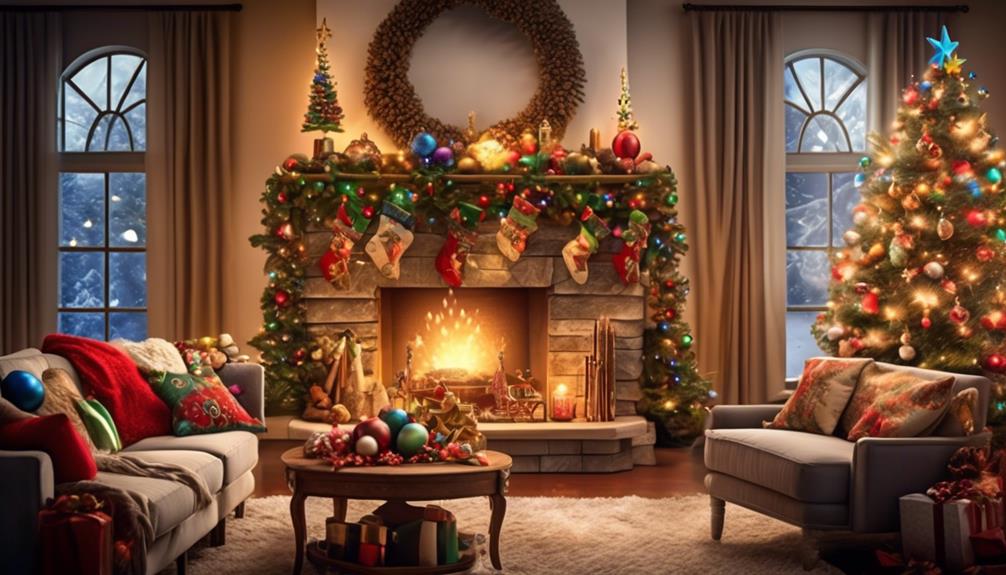
Gathered around the sparkling lights and colorful ornaments, it’s fascinating to consider where our beloved tradition began.
The history of decorating a Christmas tree is deeply rooted in ancient customs and cultural practices. From the sacred trees of ancient civilizations to the royal influence of Prince Albert and Queen Victoria, the evolution of this beloved tradition is a tapestry woven with diverse threads.
Over time, the Christmas tree tradition has been embraced and adapted by different cultures, resulting in a rich tapestry of unique customs and decorations.
Today, as we adorn our trees with personal touches, we pay homage to the past while creating new memories for generations to come.
Key Takeaways
- Decorating a Christmas tree can be traced back to ancient pagan practices, where evergreen trees were used to celebrate the winter solstice and honor spiritual forces.
- Christianity has had a profound influence on the traditions and symbolism of decorating a Christmas tree, with ornaments symbolizing the birth of Christ and the light of Christ shining in darkness.
- Different cultures have unique customs and symbols associated with Christmas tree adornments, such as German ornaments featuring intricate designs and Latin American countries using colorful papel picado and handmade ornaments.
- The tradition of decorating Christmas trees was Americanized and popularized after being introduced by Prince Albert and Queen Victoria in Britain, eventually becoming an essential part of American holiday celebrations.
Ancient Pagan Roots
The ancient pagan roots of decorating a Christmas tree can be traced back to various cultures and traditions around the world. Pagan practices, which predate Christianity, often involved the use of evergreen trees to celebrate the winter solstice. In many cultures, these trees symbolized fertility and the rebirth of nature. The cultural significance of the Christmas tree can be seen in its adoption by early Christians as a way to incorporate pagan traditions into their new faith.
One of the earliest recorded instances of decorating trees for the winter solstice comes from ancient Rome, where fir trees were adorned with small figurines and candles. This practice was believed to honor the god Saturn and bring good fortune for the coming year. Similarly, in ancient Egypt, palm branches were used to decorate homes during the winter solstice celebrations, symbolizing life and victory over death.
In Northern Europe, the pagans believed that evergreen trees held special powers during the winter months. They'd bring these trees into their homes and decorate them with fruits, nuts, and candles as offerings to the gods. This practice eventually evolved into the modern tradition of decorating Christmas trees with ornaments and lights.
The pagan origins of decorating a Christmas tree highlight the rich tapestry of cultural traditions that have shaped our holiday celebrations. By embracing these ancient practices, we not only honor our ancestors but also connect with the deeper meaning behind the holiday season.
Sacred Trees in Ancient Cultures
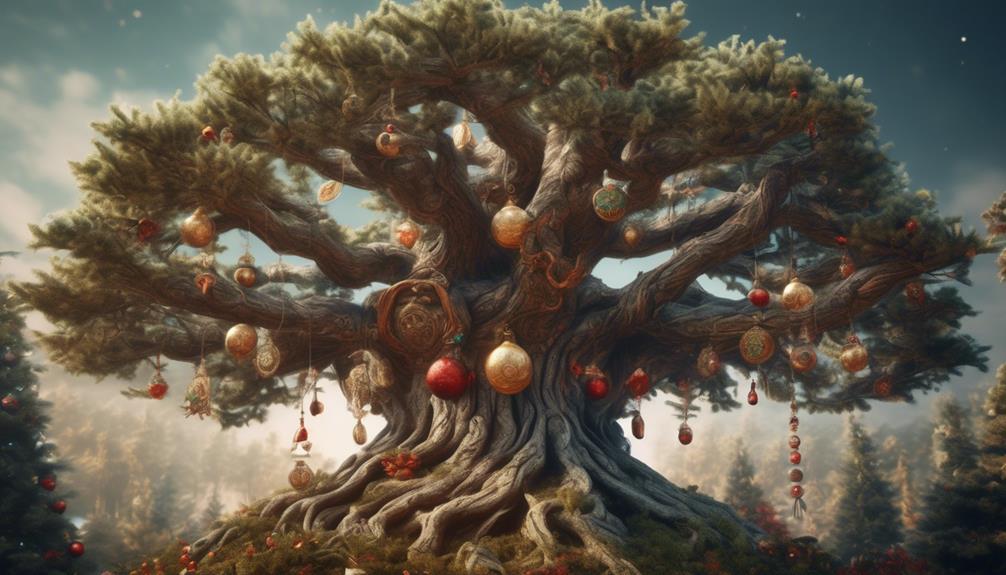
When exploring the topic of sacred trees in ancient cultures, it's important to consider the deep symbolism that these trees held in various traditions, rituals, and festivities.
These trees weren't simply objects of worship, but rather represented a connection between the natural world and the divine. Through their reverence and adornment, ancient cultures sought to honor and communicate with the spiritual forces they believed resided within these sacred trees.
Understanding the significance and cultural context of these ancient practices can provide valuable insights into our own modern-day traditions surrounding the decoration of Christmas trees.
Symbolism in Ancient Traditions
What do ancient cultures reveal about the symbolism of sacred trees?
The symbolic meanings and cultural significance of sacred trees in ancient traditions offer us a glimpse into the beliefs and values of these cultures. Here are three key insights:
- Connection to the Divine: Many ancient cultures believed that sacred trees served as a bridge between the earthly realm and the divine. These trees were seen as dwelling places for gods and spirits, and were often used as sites for rituals and ceremonies.
- Life and Fertility: Sacred trees were frequently associated with the cycles of life and fertility. They represented the regenerative power of nature and were believed to bring abundance and prosperity to the community.
- Protection and Healing: Sacred trees were seen as sources of protection and healing. They were considered to have the ability to ward off evil spirits and bring about physical and spiritual well-being.
Rituals and Festivities
In ancient cultures, the rituals and festivities surrounding sacred trees played a vital role in connecting communities with the divine and celebrating the cycles of life and fertility. These rituals were deeply rooted in the belief that trees held special powers and served as a link between humans and the spiritual realm. As time passed, these practices evolved and eventually gave rise to the tradition of decorating Christmas trees.
One of the most fascinating aspects of the evolution of Christmas tree ornaments is the wide array of cultural variations in their decorations. Different cultures have their own unique customs and symbols associated with Christmas tree adornments. For example, in Germany, the birthplace of the modern Christmas tree, ornaments often feature intricate designs made from glass or porcelain. In Scandinavian countries, ornaments made from straw or wood are popular, reflecting their connection to nature. Meanwhile, in Latin American countries, Christmas trees are adorned with colorful papel picado, papelitos, and handmade ornaments that reflect the vibrant local traditions.
The table below provides a glimpse into the cultural variations in Christmas tree decorations:
| Culture | Ornaments | Symbolism |
|---|---|---|
| Germany | Glass, porcelain | Intricate designs symbolize craftsmanship and attention to detail |
| Scandinavia | Straw, wood | Reflects the connection to nature and simplicity |
| Latin America | Papel picado, | Vibrant colors and traditional motifs celebrate local heritage |
| papelitos, | ||
| handmade |
As we can see, the evolution of Christmas tree ornaments has mirrored the rich diversity of cultures around the world. These ornaments not only add beauty to the festive season but also serve as a meaningful way to honor and preserve cultural traditions. By embracing the cultural variations in Christmas tree decorations, we can foster a sense of unity and appreciation for the diverse tapestry of human experiences.
The Influence of Christianity
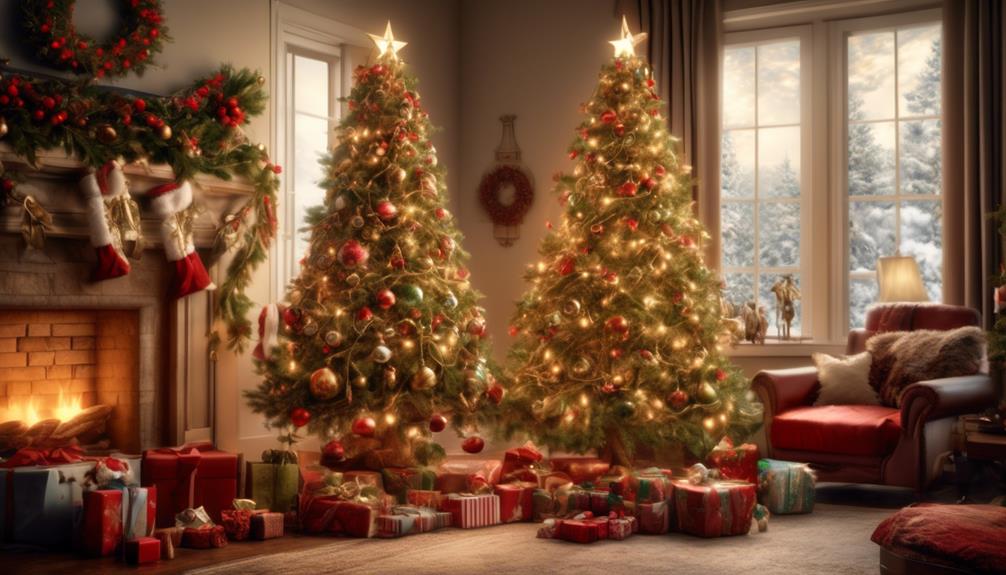
The profound impact of Christianity can be observed in the rich traditions and symbolism associated with decorating a Christmas tree. As Christians, we've incorporated our beliefs and values into this festive practice, giving it a deeper meaning and purpose. Here are three ways in which Christianity has influenced the traditions surrounding the Christmas tree:
- Influence on holiday music: Christianity has had a significant influence on the songs and carols that are sung during the Christmas season. Many of these songs express the joy and celebration of the birth of Jesus Christ. They remind us of the religious significance of Christmas and the reason for our festivities. Whether it's 'O Holy Night' or 'Silent Night,' these hymns connect us to our faith and inspire us to reflect on the religious aspects of the holiday.
- Impact on holiday recipes: The Christian faith has also influenced the types of food and recipes that are associated with Christmas. Traditional dishes like roasted turkey or ham, fruitcake, and gingerbread cookies have become staples in many Christian households during this time of year. These recipes often have religious symbolism, such as the fruitcake representing the fruits of the Holy Spirit or the gingerbread cookies shaped like angels or nativity scenes. By incorporating these recipes into our celebrations, we're reminded of the Christian values and stories that are at the heart of Christmas.
- Symbolism in ornaments and decorations: Christianity has given rise to the use of specific ornaments and decorations on Christmas trees that hold religious significance. For example, the star or angel placed at the top of the tree represents the Star of Bethlehem or the angel that appeared to announce the birth of Jesus. The use of lights on the tree symbolizes the light of Christ shining in the darkness. Additionally, ornaments depicting scenes from the nativity, such as the baby Jesus, Mary, Joseph, and the shepherds, serve as reminders of the biblical story of Jesus' birth. By incorporating these symbols into our tree decorations, we're visually expressing our Christian faith and keeping the focus on the religious meaning of Christmas.
Medieval Germany and the Tannenbaum
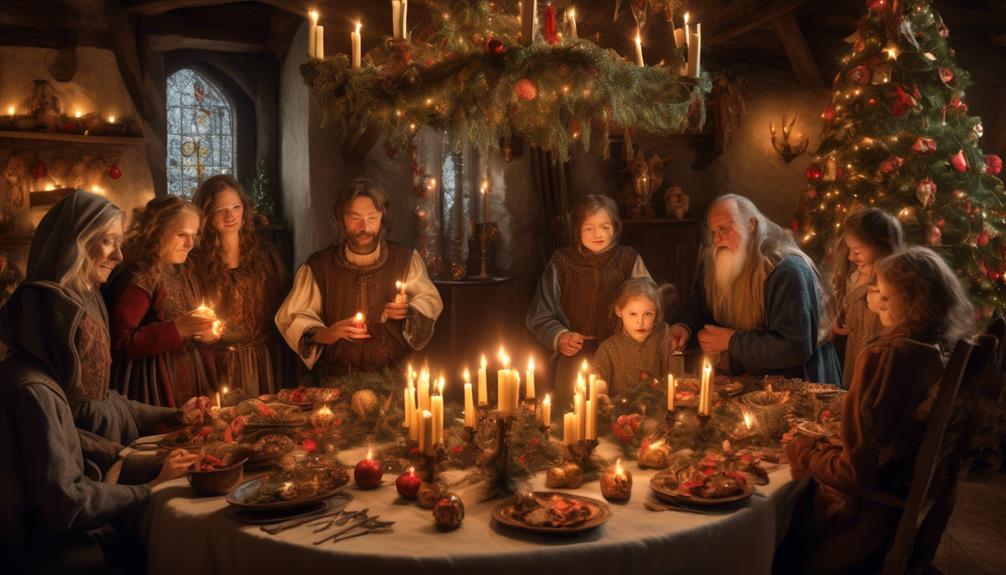
Let's now turn our attention to the medieval period in Germany and explore the origins of the Tannenbaum in German Christmas traditions.
It's important to understand the historical context in which the Tannenbaum became a prominent symbol of Christmas. By examining the customs and practices of medieval Germany, we can gain insight into how the tradition of decorating a Christmas tree evolved over time.
German Christmas Traditions
During the medieval period in Germany, the Tannenbaum became an integral part of the country's Christmas traditions.
Here are three key German Christmas traditions that have stood the test of time:
- German Christmas Markets: Dating back to the late Middle Ages, German Christmas markets are a cherished tradition. These festive markets, known as 'Weihnachtsmärkte,' offer a wide array of handmade crafts, delicious food, and warm drinks like Glühwein (mulled wine). Strolling through the stalls, you can find unique gifts and immerse yourself in the festive atmosphere.
- Advent Wreath: The Advent wreath is another beloved German tradition. Made of evergreen branches and adorned with four candles, it symbolizes the waiting period leading up to Christmas. Each Sunday of Advent, a candle is lit to mark the passing weeks, building anticipation for the arrival of Christmas.
- Tannenbaum: Of course, no German Christmas would be complete without the Tannenbaum, or Christmas tree. The tradition of decorating trees during the holiday season is said to have originated in Germany. Families gather around the beautifully adorned tree, exchanging gifts and creating cherished memories.
These traditions continue to be an essential part of German Christmas celebrations, bringing joy and warmth to homes across the country.
Historical Origins of Tannenbaum
As we delve into the historical origins of the Tannenbaum, it's fascinating to explore how this iconic symbol of Christmas in Germany originated during the medieval period.
The roots of the Tannenbaum can be traced back to ancient tree worship, which was a prevalent practice in many cultures. Trees, especially evergreens like the fir, were seen as symbols of fertility, growth, and eternal life.
In medieval Germany, the Tannenbaum held great cultural significance. It was believed to ward off evil spirits and bring good luck and prosperity to the household. The practice of decorating the tree with ornaments and candles also began during this time, adding to the tree's enchanting allure.
The Tannenbaum, with its rich historical and cultural associations, continues to be a cherished tradition in Germany and has spread its festive spirit across the globe.
The Royal Connection: Prince Albert and Queen Victoria
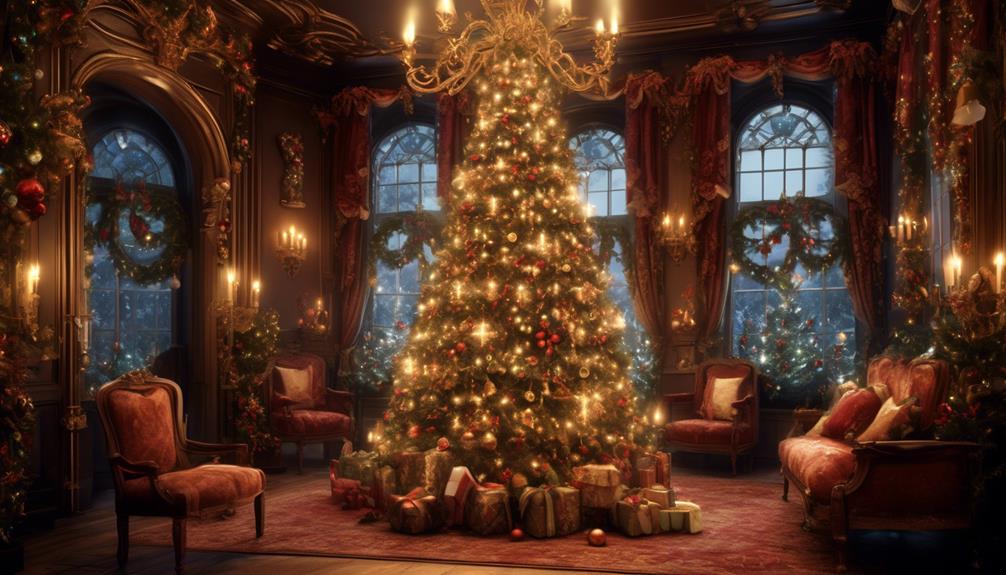
What was the significance of Prince Albert and Queen Victoria's connection to the tradition of decorating Christmas trees?
- Royal Influence: Prince Albert, who was originally from Germany, introduced the tradition of decorating Christmas trees to the British royal family. In 1848, a sketch of the royal family gathered around a decorated Christmas tree was published in a popular London newspaper. This image captured the attention of the public and sparked a trend that quickly spread throughout Britain.
- British Christmas Traditions: Prior to Prince Albert's influence, the British didn't have a strong tradition of decorating Christmas trees. However, Queen Victoria embraced this German custom and it soon became a popular tradition among the British people. The royal family's endorsement of the Christmas tree helped solidify its place in British Christmas celebrations, and it has remained a cherished tradition ever since.
- Symbol of Family Unity: The Christmas tree represented more than just a festive decoration for Prince Albert and Queen Victoria. It symbolized family unity and the importance of spending time together during the holiday season. By adopting this tradition, the royal couple conveyed a message of togetherness and love that resonated with the British public.
The royal connection of Prince Albert and Queen Victoria to the tradition of decorating Christmas trees played a pivotal role in popularizing this festive custom in Britain. Their influence helped establish the Christmas tree as an essential part of British Christmas traditions, and it continues to be cherished by families across the country.
Americanization of the Christmas Tree Tradition

Prince Albert and Queen Victoria's introduction of the tradition of decorating Christmas trees in Britain had a profound impact, leading to the Americanization of this festive custom. As the practice gained popularity in Britain, it eventually made its way across the Atlantic to the United States, where it took on new meanings and traditions. The Americanization of the Christmas tree tradition can be seen in various aspects, including the way it is decorated, the ornaments used, and the cultural assimilation that occurred.
| British Tradition | Americanized Tradition | |
|---|---|---|
| Decoration | Simple and elegant | Elaborate and vibrant |
| Ornaments | Homemade and natural materials | Store-bought and colorful |
| Cultural Assimilation | Rooted in British history and tradition | Incorporated into American culture and celebrations |
The impact of Americanization on the Christmas tree tradition was significant. The tradition became more extravagant and commercialized, with families competing to have the most extravagant and beautifully decorated tree. The ornaments became more diverse and colorful, incorporating symbols of American culture and values. Additionally, the Christmas tree became an important symbol of American holiday celebrations, representing the spirit of unity and joy during the festive season.
Modern-Day Christmas Tree Decorations
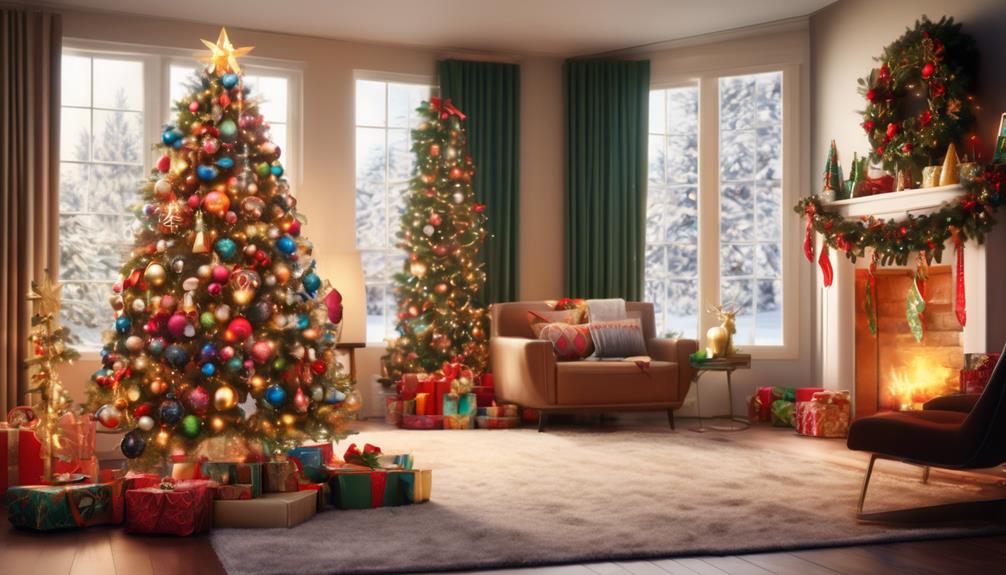
Modern-day Christmas tree decorations have evolved to reflect a wide range of styles, trends, and personal preferences. Gone are the days of solely adorning the tree with traditional ornaments. Today, we've a plethora of options to choose from to make our trees uniquely our own.
- Modern-day Christmas tree ornaments: These ornaments come in a variety of materials, shapes, and sizes. From glass baubles to wooden figurines, there's something for everyone. Many people opt for contemporary designs that add a touch of elegance and sophistication to their trees. Others prefer whimsical and playful ornaments that bring a sense of joy and fun to the holiday season.
- DIY Christmas tree decorations: With the rise of do-it-yourself culture, more and more people are embracing the idea of creating their own Christmas tree decorations. DIY ornaments allow individuals to showcase their creativity and add a personal touch to their trees. From handmade paper snowflakes to painted pinecones, the possibilities are endless. Not only does this trend promote sustainability and reduce waste, but it also fosters a sense of pride and accomplishment.
- Personalization and customization: In today's digital age, personalized and customized ornaments have become increasingly popular. Many companies offer the option to personalize ornaments with names, dates, or even photographs. This allows individuals to commemorate special moments and create lasting memories. Additionally, customizable ornaments give people the opportunity to express their unique style and preferences, making their Christmas trees truly one-of-a-kind.
Modern-day Christmas tree decorations have come a long way from their traditional origins. With a wide array of options, from modern ornaments to DIY creations, there's no limit to the creativity and personalization that can be achieved.
Frequently Asked Questions
What Were Some Common Decorations Used on Ancient Pagan Christmas Trees?
Common decorations on ancient pagan Christmas trees included candles, fruits, and nuts. Candles symbolized light and warmth, while fruits and nuts represented fertility and abundance. Different cultures had their own variations in tree decorations, reflecting their unique traditions and beliefs.
How Did the Tradition of Decorating Christmas Trees Spread From Ancient Cultures to Other Parts of the World?
Decorating Christmas trees spread from ancient cultures to other parts of the world due to its cultural significance and symbolism. Different ancient cultures had unique traditions and meanings associated with their tree decorations, reflecting their beliefs and values.
Did the Christmas Tree Tradition Exist Before Christianity or Did It Originate From the Influence of Christianity?
The origins of the Christmas tree tradition are rooted in pre-Christian influences, but its adoption and popularity were greatly influenced by Christianity. The practice has evolved over time, becoming an integral part of Christmas celebrations worldwide.
What Role Did Medieval Germany Play in the Development of the Christmas Tree Tradition?
Medieval Germany played a significant role in the development of the Christmas tree tradition. Pagan decorations, such as candles and evergreen branches, influenced the practice of decorating trees during the holiday season.
How Did the Royal Connection Between Prince Albert and Queen Victoria Impact the Popularity of Christmas Tree Decorations?
The royal connection between Prince Albert and Queen Victoria had a significant impact on the popularity of Christmas tree decorations. Their endorsement helped to popularize the tradition, making it a cherished part of holiday celebrations.
Conclusion
In conclusion, the tradition of decorating a Christmas tree has deep roots in ancient pagan rituals, sacred trees in ancient cultures, and the influence of Christianity. It gained popularity in medieval Germany and was further popularized by Prince Albert and Queen Victoria.
Over time, the tradition has been Americanized and has become a symbol of joy and celebration during the holiday season. The ornaments adorning the tree serve as symbols of love, happiness, and cherished memories, making this tradition a beloved and meaningful part of modern-day Christmas celebrations.
- About the Author
- Latest Posts
Introducing Ron, the home decor aficionado at ByRetreat, whose passion for creating beautiful and inviting spaces is at the heart of his work. With his deep knowledge of home decor and his innate sense of style, Ron brings a wealth of expertise and a keen eye for detail to the ByRetreat team.
Ron’s love for home decor goes beyond aesthetics; he understands that our surroundings play a significant role in our overall well-being and productivity. With this in mind, Ron is dedicated to transforming remote workspaces into havens of comfort, functionality, and beauty.

Picture turning your used artificial Christmas tree into a beautiful garden ornament. By using some creativity and expertise, you can spruce up your garden for the holidays while also being environmentally conscious.
In this article, we’ll show you how to recycle artificial Christmas trees to decorate your garden. From selecting the right tree to preparing it for outdoor use, we’ll provide practical tips and creative ideas to help you repurpose your holiday tree and add a touch of magic to your outdoor space.
Key Takeaways
- Choose a tree size and shape that fits well in your garden space.
- Upcycle your artificial tree by adding bird feeders, hanging flower baskets, or string lights.
- Repurpose your tree with imagination and turn it into a unique garden decoration.
- Regularly water live branches and remove any dead or wilted foliage.
Selecting the Right Artificial Christmas Tree for Garden Decor
You should start by choosing the right artificial Christmas tree for your garden decor. An outdoor Christmas tree can be a stunning addition to your garden, adding a touch of festive charm. When selecting your tree, consider the size and shape that will fit best in your garden space.
Look for a tree that’s specifically designed for outdoor use, as it will be more durable and weather-resistant. Additionally, consider the style and color of your garden ornaments to ensure that your tree complements your existing decor.
Whether you prefer a traditional green tree or a more unique color, such as white or silver, there are plenty of options available. By selecting the right artificial Christmas tree, you can create a magical outdoor display that will delight both you and your guests.
Preparing the Artificial Christmas Tree for Outdoor Use
Get your outdoor space ready by making sure your artificial tree is properly prepared for use. Before placing your tree in the garden, consider upcycling options to give it a new purpose. You can transform your artificial tree into a unique garden decoration by adding bird feeders, hanging flower baskets, or even string lights. To ensure its longevity, weatherproofing techniques are essential. Here are some tips to protect your tree from the elements:
| Weatherproofing Techniques | Upcycling Options |
|---|---|
| Apply a waterproof sealant | Bird feeders |
| Use UV-resistant spray paint | Hanging flower baskets |
| Wrap the base with plastic | String lights |
Creative Ideas for Repurposing Artificial Christmas Trees in the Garden
Transforming your artificial tree into a unique garden decoration can add a touch of creativity to your outdoor space. Instead of throwing away your old Christmas tree, consider repurposing it for outdoor crafts and giving it a new life in your garden.
Here are some unique ways to use artificial Christmas trees in the garden:
-
Create a bird feeder: Hang pinecones filled with birdseed from the branches of the tree. The birds will love having a feeding station in your garden.
-
Make a wreath: Use the branches of the artificial tree to create a beautiful wreath for your garden gate or front door. Add some colorful decorations to make it truly unique.
-
Build a garden trellis: Use the sturdy branches of the tree to create a trellis for your climbing plants. It won’t only support their growth but also add a whimsical touch to your garden.
With a little imagination, you can repurpose your artificial Christmas tree and turn it into a one-of-a-kind garden decoration.
Tips for Decorating the Garden With Recycled Artificial Christmas Trees
Spruce up your outdoor space by repurposing your old holiday tree into unique decorations for your garden. Transforming your artificial Christmas tree into DIY outdoor Christmas tree decorations is a fun and eco-friendly way to add a festive touch to your garden all year round. Check out the table below for some creative ideas on how to repurpose your artificial Christmas tree:
| Decoration Idea | Materials Needed | How to Make |
|---|---|---|
| Miniature Tree | Tree branches, pots, decorations | Cut branches to desired length and attach to a small pot. Decorate with ornaments and lights. |
| Garland | Tree branches, wire | Bend wire into desired shape and attach branches. Hang as garland around fences or pergolas. |
| Bird Feeder | Tree branches, birdseed, wire | Attach branches together to form a platform. Fill with birdseed and hang from a tree branch. |
Now that you have some ideas for repurposing your artificial Christmas tree, let’s move on to the next section to learn how to maintain and care for these decorations in your garden.
Maintaining and Caring for Artificial Christmas Tree Decorations in the Garden
To keep your outdoor Christmas tree decorations looking their best, make sure to regularly water any live branches and remove any dead or wilted foliage. Caring for artificial Christmas tree decorations in the garden requires some attention and maintenance. Here are some tips to help you protect and maintain your artificial Christmas trees in the garden:
-
Provide proper support: Use sturdy stakes or a tree stand to secure your artificial tree in the garden, especially in windy conditions.
-
Clean regularly: Dust and debris can accumulate on your artificial tree, so make sure to clean it regularly with a soft brush or cloth to maintain its appearance.
-
Protect from harsh weather: Extreme weather conditions like heavy rain, snow, or strong winds can damage your artificial tree. Consider using a protective cover or moving it to a sheltered area during inclement weather.
Frequently Asked Questions
Can I Use a Real Christmas Tree for Garden Decor Instead of an Artificial One?
You can definitely use a real Christmas tree for garden decor instead of an artificial one. However, there are some benefits to using an artificial tree, such as durability and reusability.
How Do I Determine the Correct Size of Artificial Christmas Tree to Use in My Garden?
To determine the correct size of an artificial Christmas tree for your garden, measure the available space and consider the overall aesthetic you want to achieve. Choose a tree that fits well and complements your garden’s design.
Can I Leave My Artificial Christmas Tree Outside in All Weather Conditions?
You shouldn’t leave your artificial Christmas tree outside in all weather conditions. It’s important to protect it from harsh elements to ensure its longevity. Follow best practices for outdoor decoration to keep it looking great.
Are There Any Safety Precautions I Should Take When Repurposing an Artificial Christmas Tree in the Garden?
When repurposing an artificial Christmas tree in the garden, it’s important to take safety precautions. Follow these repurposing tips to ensure a safe and successful project.
How Often Should I Clean and Maintain My Recycled Artificial Christmas Tree Decorations in the Garden?
You should clean and maintain your recycled artificial Christmas tree decorations in the garden regularly. Dust and debris can accumulate, so a quick wipe-down and inspection every few weeks will keep them looking fresh and festive.
Conclusion
In conclusion, recycling artificial Christmas trees to decorate your garden is a practical and creative way to add a festive touch to your outdoor space. By selecting the right tree, preparing it for outdoor use, and implementing creative ideas for repurposing, you can create a unique garden decor that will impress your guests.
Remember to maintain and care for your artificial tree decorations to ensure they last for many seasons to come. Happy gardening!
- About the Author
- Latest Posts
Introducing Charles, the Editor in Chief at ByRetreat, whose passion for interior design and editorial excellence elevates every remote workspace to new heights. With his keen eye for detail, impeccable taste, and expertise in design, Charles brings a wealth of knowledge and creativity to the ByRetreat team.
As the Editor in Chief of a renowned lifestyle blog, Charles has honed his skills in curating captivating content and staying up-to-date with the latest trends in interior design. His deep understanding of aesthetics and the power of storytelling through design enables him to create remote workspaces that are not only visually stunning but also rich in personality and meaning.
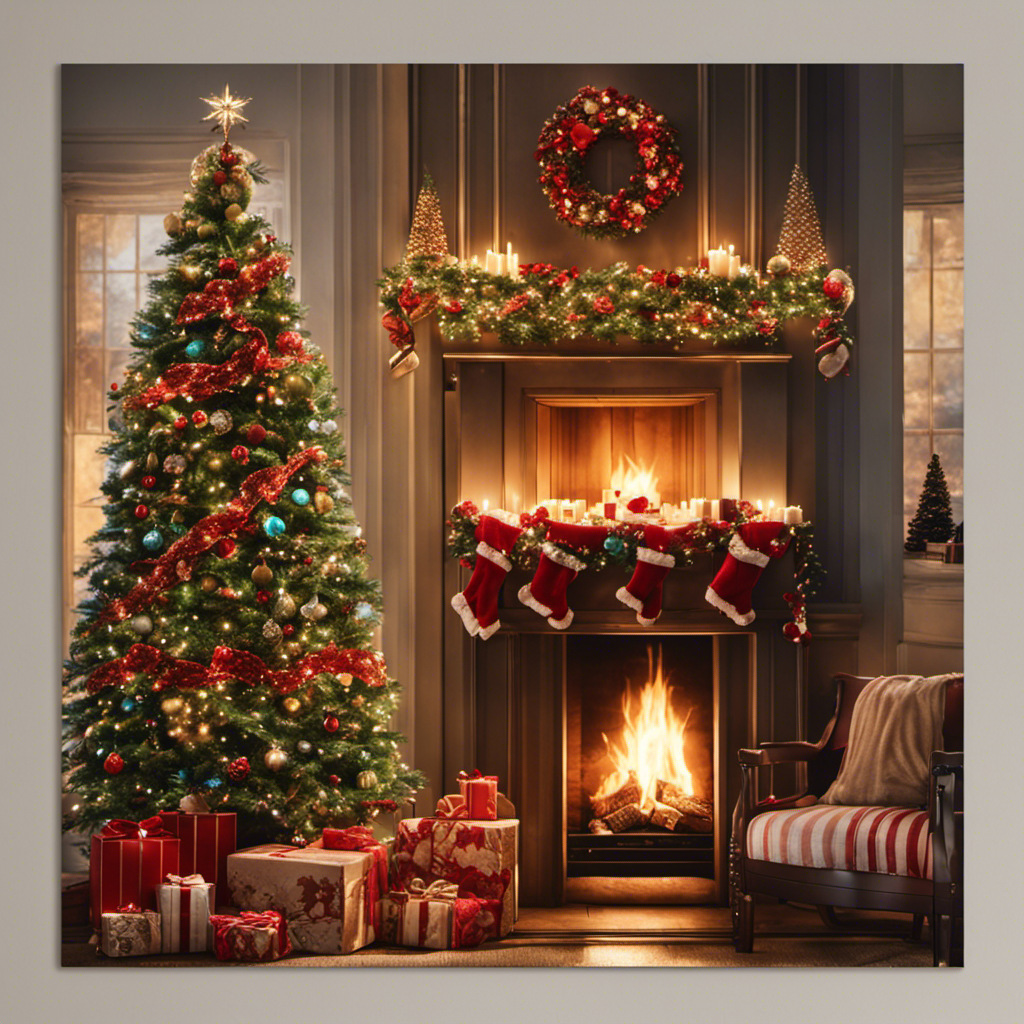
Have you ever thought about when is the right time to remove your Christmas decorations?
In the British tradition, there is a specific date that marks the end of the festive season. Known as Twelfth Night, it falls on January 5th, twelve days after Christmas Day.
This longstanding practice has its historical origins and regional variations across the UK. Understanding the significance of this tradition and its modern interpretation can add a touch of sophistication to your holiday celebrations.
Key Takeaways
- The tradition of taking down Christmas decorations originated in the Victorian era and was believed to bring bad luck if decorations were left up past Twelfth Night.
- Twelfth Night, celebrated on January 6th, marks the end of the Christmas season and symbolizes the visit of the three wise men to baby Jesus.
- The traditional date for taking down decorations is January 6th, but there are regional variations in the UK, with Scotland, Northern Ireland, and Wales having their own customs.
- Modern interpretation of the tradition allows for more flexibility, with some people choosing to take down decorations earlier or keep them up longer to extend the festive atmosphere.
Historical Origins of the Tradition
You might be wondering where the tradition of taking down Christmas decor originated. Well, let’s delve into its historical significance and cultural customs.
The tradition of removing Christmas decorations dates back to the Victorian era in Britain. During this time, Christmas trees were adorned with candles, ribbons, and ornaments, creating a festive atmosphere. However, it was believed that leaving the decorations up past Twelfth Night, which falls on January 5th or 6th, would bring bad luck for the coming year.
Twelfth Night is the traditional end of the Christmas season and marks the arrival of the Feast of the Epiphany. It symbolizes the visit of the three wise men to baby Jesus. Therefore, taking down the decorations before or on Twelfth Night became a customary practice in British culture.
Significance of the Twelfth Night
Celebrate the significance of the Twelfth Night by keeping your holiday decorations up until January 6th. This traditional date marks the end of the Christmas season and is rich in customs and superstitions. Here are three ways to embrace this festive occasion:
-
Wassailing: Gather with friends and family to go door-to-door, singing carols and sharing a warm drink to bless the orchards for a fruitful year ahead.
-
Twelfth Night Cake: Bake a delicious cake with a hidden bean and a pea. The person who finds the bean becomes the king or queen for the night, while the one who discovers the pea must be their servant.
-
Taking down decorations: On Twelfth Night, it’s believed that leaving Christmas decorations up beyond this date brings bad luck. So, bid farewell to the holiday season and prepare for the year ahead by carefully packing away your festive adornments.
As the Twelfth Night festivities come to an end, it’s time to explore the traditional date for taking down decorations.
Traditional Date for Taking Down Decorations
Bid farewell to the holiday season by adhering to the traditional date of January 6th for removing your festive adornments. This date, known as Twelfth Night, has been celebrated for centuries and holds cultural significance in many countries. The belief is that leaving decorations up beyond this date brings bad luck or hinders the arrival of spring.
While some may view this practice as superstitious, it’s an interesting cultural tradition that has stood the test of time.
In addition to cultural beliefs, there’s also an environmental impact to consider when it comes to keeping decorations up for longer periods. Many Christmas decorations are made from non-biodegradable materials, such as plastic and synthetic fibers, which can contribute to pollution and waste.
By adhering to the traditional date, you can minimize the environmental impact and ensure a more sustainable approach to celebrating the holiday season.
Regional Variations in the UK
In the UK, different regions have their own unique customs and practices when it comes to removing holiday decorations. Regional customs often reflect cultural differences and add a touch of diversity to this tradition. Here are three examples of regional variations in the UK:
-
In Scotland, it’s common to take down Christmas decorations on or before January 5th, which is known as ‘Twelfth Night.’ This date marks the end of the Christmas season and the arrival of Epiphany.
-
In Northern Ireland, some households adhere to the tradition of taking down decorations on January 6th, which is also known as ‘Little Christmas’ or ‘Women’s Christmas.’ This day is dedicated to women and is seen as the final opportunity to celebrate the festive season.
-
In Wales, it’s customary to remove decorations on January 7th, known as ‘Festival of Fools.’ This date is associated with a humorous celebration where people play pranks on each other.
These regional customs highlight the rich cultural tapestry of the UK and demonstrate how different communities interpret and celebrate the end of the Christmas season.
Now, let’s delve into the modern interpretation of this tradition.
Modern Interpretation of the Tradition
To put a unique spin on the end of the holiday season, you can embrace a modern interpretation of removing your festive decorations.
Traditionally, the British have followed the custom of taking down Christmas decorations on the twelfth night after Christmas, which falls on January 5th or 6th. However, in recent times, there’s been a shift in cultural significance and more flexibility in interpreting this tradition.
Some people now choose to take down their decorations earlier, either out of convenience or personal preference. Others may choose to keep them up longer, extending the festive atmosphere into the new year.
This modern interpretation allows individuals to personalize the end of the holiday season and reflect their own values and desires, adding a touch of individuality to an age-old tradition.
Frequently Asked Questions
What Are Some Common Types of Christmas Decorations Used in the Uk?
In the UK, people use different types of Christmas decorations. Traditional decorations, like Christmas trees and ornaments, are popular. Some prefer homemade decorations, while others opt for store-bought ones. Christmas lights and fairy lights are also commonly used.
How Do Other Countries Celebrate the End of the Christmas Season?
Different countries have their own unique ways of celebrating the conclusion of the Christmas season. From Spain’s Three Kings Day to Russia’s Old New Year, these end of season festivities showcase cultural diversity and traditions.
Are There Any Specific Rituals or Ceremonies Associated With Taking Down Christmas Decorations in the Uk?
In the UK, taking down Christmas decorations involves various rituals and ceremonies. These practices carry cultural significance and have historical origins. Some alternative traditions have also emerged over time.
Has the Tradition of Taking Down Christmas Decorations on the Twelfth Night Always Been Practiced in the Uk?
The tradition of taking down Christmas decorations on the twelfth night has not always been practiced in the UK. Its historical origins can be traced back to ancient times. However, attitudes towards this tradition have changed in modern-day UK.
Are There Any Superstitions or Beliefs Associated With Leaving Christmas Decorations up Past the Traditional Date for Taking Them Down?
Leaving up Christmas decorations past the traditional date can be seen as bad luck or a sign of laziness. It is important to respect the cultural significance of taking them down on time to avoid any negative superstitions.
Conclusion
So, you’ve finally reached the end of the festive season, and it’s time to bid farewell to your beloved Christmas decorations.
According to tradition, you should wait until the Twelfth Night to take them down. But let’s be honest, who’s got the time or patience for that?
In this modern age, we don’t need to stick to ancient customs. So go ahead, break the tradition, and take down those decorations whenever you please.
After all, rules were made to be broken, right?
- About the Author
- Latest Posts
Introducing Ron, the home decor aficionado at ByRetreat, whose passion for creating beautiful and inviting spaces is at the heart of his work. With his deep knowledge of home decor and his innate sense of style, Ron brings a wealth of expertise and a keen eye for detail to the ByRetreat team.
Ron’s love for home decor goes beyond aesthetics; he understands that our surroundings play a significant role in our overall well-being and productivity. With this in mind, Ron is dedicated to transforming remote workspaces into havens of comfort, functionality, and beauty.
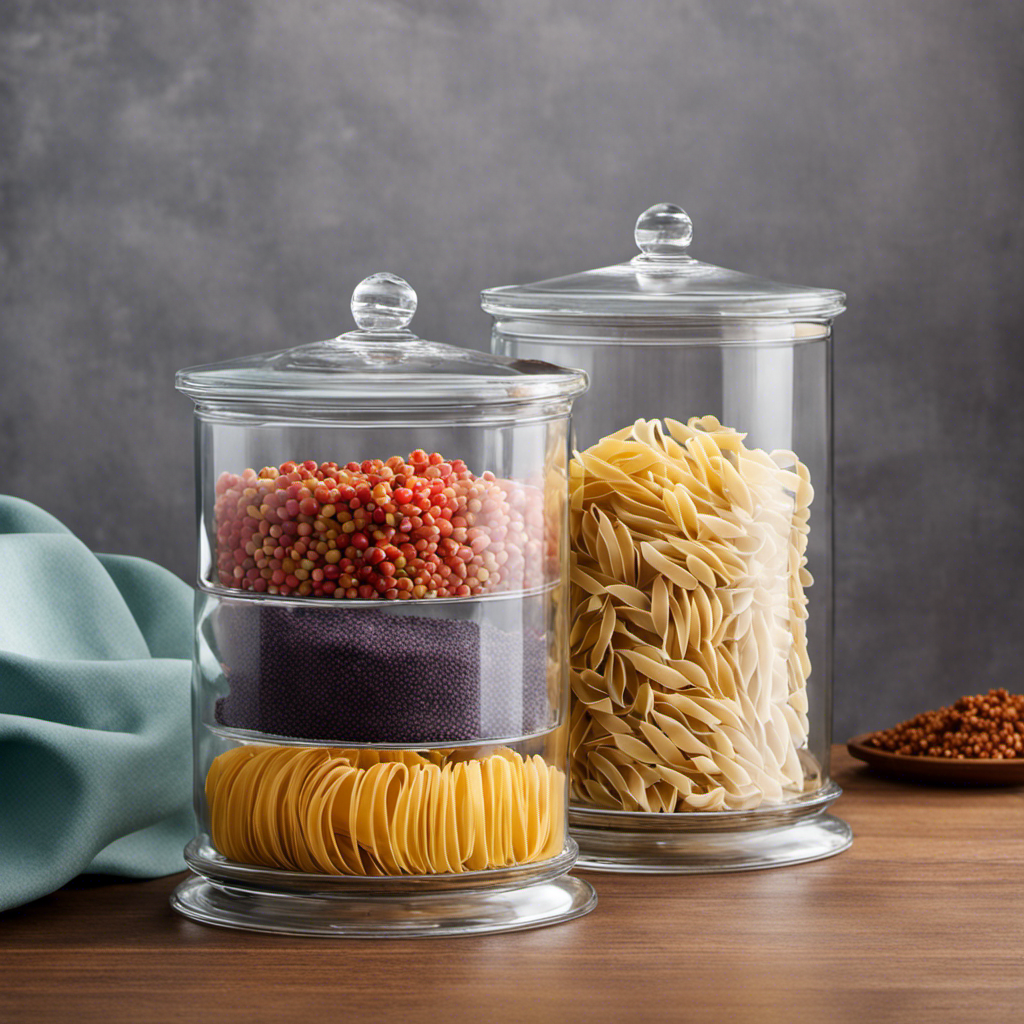
Hey everyone! Have you ever faced difficulties in enhancing your kitchen decor? Don’t worry, because I have some great ideas on what to put in those clear canisters. Believe me, it will make a big difference.
From fresh herbs and spices to colorful dry pasta, and even assorted baking supplies, the options are endless.
Oh, and let’s not forget about dried fruits and nuts, or the heavenly aroma of coffee beans and tea leaves.
Get ready to transform your kitchen into a stylish and functional space!
Key Takeaways
- Fresh herbs and spices bring freshness and vitality to the kitchen
- Colorful dry pasta adds pop of color and personality to the kitchen
- Organized baking supplies save time and add elegance to the kitchen
- Coffee beans and tea leaves in clear canisters add elegance and aroma to the kitchen
Fresh Herbs and Spices
I love filling clear canisters with fresh herbs and spices to add a burst of flavor and color to my kitchen decor.
One of my favorite ways to incorporate herbs into my kitchen is by creating an indoor herb garden. It not only adds a touch of greenery but also provides me with a convenient source of fresh herbs for cooking.
I enjoy the process of selecting different herbs like basil, rosemary, and thyme, and nurturing them as they grow. Not only do they enhance the aroma and taste of my dishes, but they also bring a sense of freshness and vitality to my kitchen.
Additionally, I enjoy experimenting with DIY spice blends. By combining different spices like cumin, paprika, and garlic powder, I can create unique flavors that perfectly complement my culinary creations. Having these spice blends readily available in clear canisters not only adds a decorative touch to my kitchen but also makes it easy for me to access and use them while cooking.
Colorful Dry Pasta
My favorite way to spruce up my kitchen is by using colorful dry pasta as a vibrant and eye-catching decorative element in my home. Not only does it add a pop of color, but it also brings a touch of whimsy and personality to my kitchen decor.
Here are some ideas to inspire you:
-
Different Shaped Pasta: From bowties to spirals, there are so many unique and interesting pasta shapes available. Mix and match them to create a visually appealing display in your clear canisters.
-
Vintage Kitchen Utensils: Pair your colorful dry pasta with vintage kitchen utensils to create a charming and nostalgic vibe. Hang old whisks, spatulas, and ladles on the wall or display them in a jar alongside the pasta.
-
Layered Pasta: Create layers of different colored pasta in your canisters for a stunning visual effect. This is a simple yet effective way to add depth and dimension to your kitchen decor.
Assorted Baking Supplies
One way to organize my assorted baking supplies is by using labeled containers to easily identify and access the ingredients and tools I need.
For my decorative sprinkles, I’ve a clear glass jar that showcases the vibrant colors and textures. It adds a pop of excitement to my kitchen decor, while also keeping my sprinkles fresh and easily accessible.
Another container I use is a small plastic bin for my cookie cutters. I label it ‘Cookie Cutters’ and place it on a shelf within reach. This way, whenever I’m in the mood for baking cookies, I can quickly find the perfect shape without rummaging through drawers.
Organizing my baking supplies in this way not only saves me time but also adds a touch of elegance to my kitchen.
Dried Fruits and Nuts
To keep my dried fruits and nuts fresh, I store them in airtight containers. Not only do dried fruits and nuts add a burst of flavor and texture to any dish, but they also come with numerous health benefits.
Here are some reasons why you should incorporate them into your diet:
- Boost of nutrients: Dried fruits and nuts are packed with essential vitamins, minerals, and antioxidants that promote overall well-being.
- Energy-packed snacks: Whether you’re on-the-go or need a pick-me-up during the day, dried fruits and nuts provide a quick and nutritious energy boost.
- Versatile ingredients: Get creative in the kitchen by using dried fruits and nuts in a variety of recipes, from salads and baked goods to savory dishes like stir-fries and pilafs.
Coffee Beans and Tea Leaves
I love the aroma of freshly ground coffee beans and the soothing taste of steeped tea leaves. There’s something magical about starting the day with a cup of freshly brewed coffee or a fragrant cup of tea.
When it comes to kitchen decor, clear canisters filled with coffee beans and loose leaf tea are a perfect choice. Not only do they add a touch of elegance to the kitchen, but they also serve a practical purpose. The rich, earthy scent of coffee beans fills the air, creating a warm and inviting atmosphere.
The canisters can be arranged on a countertop or displayed on a shelf, allowing you to showcase your favorite blends. To enhance the visual appeal, you can also add a few sprigs of aromatic herbs like lavender or mint to the canisters. This not only adds a pop of color but also infuses a subtle herbal fragrance into the air.
Frequently Asked Questions
How Can I Properly Store Fresh Herbs and Spices to Maintain Their Freshness and Flavor?
To properly store herbs and spices for freshness, I recommend using clear canisters. This allows you to easily see and access your collection. Ensure they are tightly sealed to maintain flavor and store in a cool, dry place away from sunlight.
What Are Some Creative Ways to Display Colorful Dry Pasta in Clear Canisters?
I love finding creative ways to display colorful dry pasta in clear canisters. It’s a great way to add a pop of color to my kitchen decor. I also enjoy showcasing fresh flowers and colorful candy for a fun and vibrant look.
How Should I Organize and Store Assorted Baking Supplies in Clear Canisters for Easy Access?
I love using clear canisters to organize and store my assorted baking supplies. It’s a great way to keep everything easily accessible. I also have some ideas for organizing small kitchen appliances and tips for storing bulk grains and flours.
Can I Store Dried Fruits and Nuts Together in the Same Clear Canister or Should They Be Stored Separately?
Storing dried fruits and nuts together in a clear canister can be convenient, but it may affect their flavors and textures. Separating them ensures freshness and prevents cross-contamination.
What Are Some Tips for Selecting and Storing Coffee Beans and Tea Leaves in Clear Canisters to Preserve Their Flavor and Aroma?
When it comes to selecting canister sizes for coffee beans and tea leaves, it’s important to consider the quantity you typically use. To preserve their flavor and aroma, clean and maintain clear canisters regularly.
Can Clear Canisters Be Used to Display Christmas Decorations in the Kitchen?
Yes, clear canisters can beautifully showcase Christmas decorations for kitchen. Fill them with festive items like colorful cookie cutters, candy canes, mini ornaments, or cinnamon sticks. The transparent containers allow you to create a visually appealing holiday display while keeping your kitchen organized and festive.
Conclusion
In conclusion, filling clear canisters with various ingredients not only adds a decorative touch to your kitchen but also serves a practical purpose.
From fragrant herbs and spices to vibrant pasta and versatile baking supplies, the options are endless.
Don’t forget to include dried fruits and nuts for a healthy snack option, and coffee beans or tea leaves for a delightful caffeine fix.
Remember, the world is your oyster when it comes to kitchen decor, so let your creativity run wild!
- About the Author
- Latest Posts
Meet Bethia, the visionary designer at ByRetreat who brings a touch of magic to every remote workspace she creates. With a boundless imagination and an eye for beauty, Bethia is passionate about transforming ordinary spaces into extraordinary havens of creativity and comfort.
Bethia possesses a unique talent for envisioning the perfect combination of furniture, colors, and textures that harmonize seamlessly in a room. She understands that selecting furniture goes beyond mere functionality; it’s about curating pieces that evoke a sense of style and sophistication while enhancing the overall ambiance.
-

 Decor2 weeks ago
Decor2 weeks agoMaximalist Decor Explained: Embrace More Style
-

 Vetted3 weeks ago
Vetted3 weeks ago15 Best Foot Massagers for Neuropathy to Soothe Your Feet and Relieve Discomfort
-

 Vetted4 weeks ago
Vetted4 weeks ago15 Best Sports Laundry Detergents for Keeping Your Activewear Fresh and Clean
-

 Vetted4 weeks ago
Vetted4 weeks ago15 Best Tall Toilets for Seniors That Combine Comfort and Safety
-

 Vetted6 days ago
Vetted6 days ago15 Best Cleaners for Fiberglass Showers to Keep Your Bathroom Sparkling Clean
-

 Vetted2 weeks ago
Vetted2 weeks ago15 Best Organic Pest Control Solutions for a Naturally Pest-Free Home
-
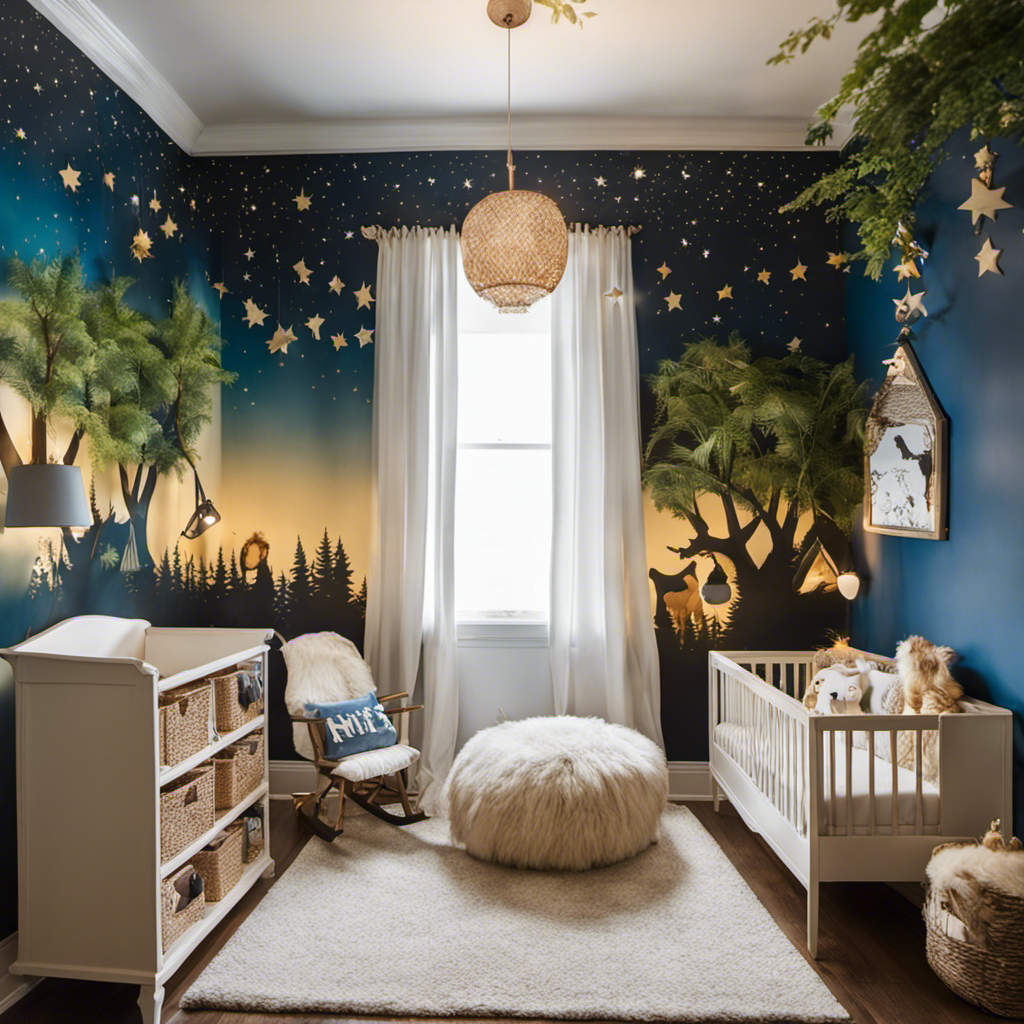
 Decor3 weeks ago
Decor3 weeks agoWhere the Wild Things Are Nursery Decor
-

 Architecture Home Styles4 weeks ago
Architecture Home Styles4 weeks agoExploring the Difference Between Traditional and Contemporary Styles





























